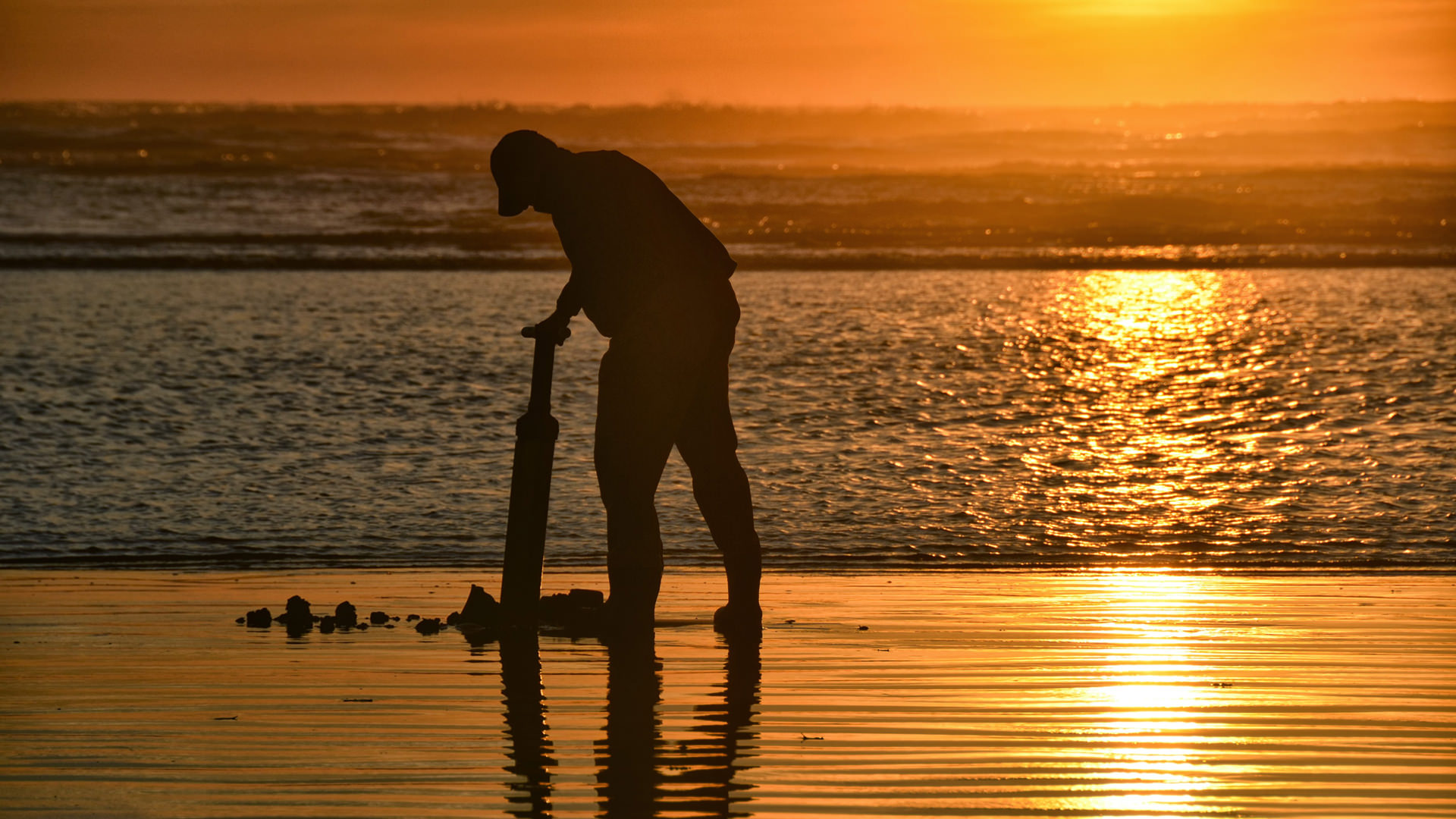While visiting Seabrook, Washington, partake in one of the most popular local activities—clam digging! There’s no experience quite like finding, preparing, and cooking your own delicious seafood dinner. As you plan your day of clam digging, you’ll need to find out more about the WA clam tides. Read on to learn everything you’ll think to know about when, where, and how to go clamming on Washington beaches. A family trip to Seabrook is sure to be an unforgettable vacation. If you’ve never experienced the Pacific Northwest before, you’re in for a treat! Surrounded by the natural beauty of mountains and beaches, you’ll never run out of outdoor activities. Check the WA clam tides and try digging up your own. Before your trip, look at our Things Do page for local insight on other activities as well as restaurants and local events.

Your Guide to WA Clam Tides
How to Locate Clams
One of the most important factors when clam digging in Washington state is the state of the ocean tide. Be sure to check the conditions of the WA clam tides before hitting the beaches. The best time to go is low tide because you’ll have more space to look for clams. Many people suggest arriving an hour or two before peak low tide. To find the clams, you must look for “clam shows.” These are areas in the sand where clams have left a trace of their presence. Scan the sand for three types of shows: keyhole (a hole about the size of a dime), donut (a small hole surrounding by raised sand), and depression (a small dent in the sand). Sometimes you’ll have to hit the sand with a shovel, clam tube, or your foot to get these shows to appear.
What You’ll Need to Dig
Once you’ve located a clam, you can either use a shovel or a clam tube to pull the shellfish up. If this if your first time clamming, it’s easiest to use the clam tube. Place the tube over the clam show, angled slightly towards the water. If you feel the tube hit the clam, readjust. Then, push the tub down into the sand, lift it out and remove the sand by shaking the tube. Congrats! Your newly found clam should fall out along with the sand. Throw your clams into a bucket as soon as possible because they can dig very quickly, and may end up back in the sand before you know it. If you want to give the shovel method a try, use the same techniques to locate a show. Then, begin to dig about six inches from the show, closer to the water. Keep your back to the surf and shovel away from the ocean. When it feels as though you’ve just barely touched the clam, reach with a gloved hand and grab the shellfish from the ocean side, where its hinge is, and pull it from the ground. Be warned, it is easier to break clams using this method. You will likely get wet while digging, so wear high boots and bring an extra set of clothing to change into. If you don’t mind getting your feet wet, you can wear sneakers, but we suggest bringing a second pair of shoes with you.
When to Dig for Clams
One of the most common questions people ask is, “when can you dig for clams in Washington state?” Clamming season greatly depends on the type of clam you’re digging for. Razor clams usually appear on the beaches from October through May. Other species like geoducks and butters can be dug year-round. Be sure to check the state harvesting rules before hitting the beach.
Relax in a Seabrook Cottage Rental
After checking the WA clam tides and reaping in some fresh, tasty shellfish, head home to a Seabrook Cottage Rental! Prep and fry up the day’s catch in one of our properties large, modern kitchens. Book a few nights in our pet-friendly Anchor Down home. While staying at this beachfront property, you and your family can carry your haul of clams directly from the sand to your door!
Browse our full catalog of properties, and stay planning your getaway to Seabrook today!
